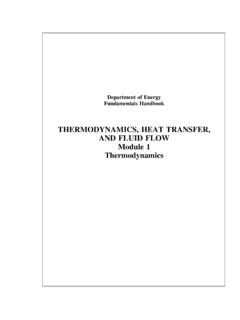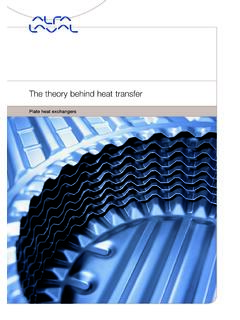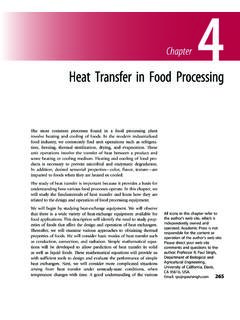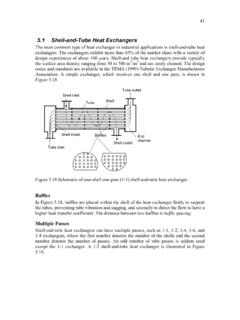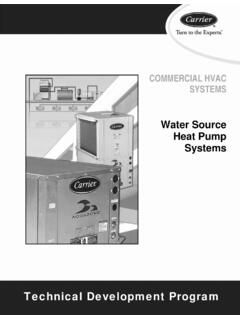Heat Transfer Applications Using
Found 9 free book(s)Mass Transfer and Diffusion - Wiley
catalogimages.wiley.comapplications are relatively straightforward. Multicomponent ... If mass transfer in solids is involved, using small particles to decrease the distance in the direction of diffusion will ... • Define a mass-transfer coefficient and explain its analogy to the heat-transfer coefficient and its usefulness, as an
THERMODYNAMICS, HEAT TRANSFER, AND FLUID FLOW …
sites.ntc.doe.govenergy transfer processes crossing the boundaries. 1.21 Using the First Law of Thermodynamics, ANALYZE cyclic processes for a thermodynamic system. 1.22 Given a defined system, PERFORM energy balances on all major components in the system. 1.23 Given a heat exchanger, PERFORM an energy balance across the two sides of the heat exchanger.
The theory behind heat transfer - Alfa Laval
www.alfalaval.comThe total overall heat transfer coefficient k is defined as: Where: 1 The design margin (M) is calculated as: M = α 1 = The heat transfer coefficient between the warm medium and the heat transfer surface (W/m2 °C) α 2 2 = The heat transfer coefficient between the heat transfer surface and the cold medium (W/m °C)
Heat Transfer in Food Processing - Prexams
cdn.prexams.comto 20,000 kg/h often are obtained. When using plate heat exchangers, care should be taken to minimize the deposition of solid food mate-rial such as milk proteins on the surface of the plates. This deposition, also called fouling, will decrease the heat transfer rate from the heating medium to the product; in addition, the pressure drop will ...
5.1 Shell-and-Tube Heat Exchangers
homepages.wmich.edu5.1 Shell-and-Tube Heat Exchangers The most common type of heat exchanger in industrial applications is shell-and-tube heat exchangers. The exchangers exhibit more than 65% of the market share with a variety of design experiences of about 100 years. Shell-and tube heat exchangers provide typically
STEADY HEAT CONDUCTION - Wright State University
www.cecs.wright.eduwhere R conv (K/W) (3–8) is the thermal resistanceof the surface against heat convection, or simply the convection resistanceof the surface (Fig. 3–4).Note that when the convec-tion heat transfer coefficient is very large (h → ), the convection resistancebecomes zero and T s T.That is, the surface offers no resistance to convec- tion, and thus it does not slow down the heat …
Water Source Heat Pump Systems - Sigler Commercial
siglercommercial.comOct 04, 2017 · recirculating closed loop or a once-thru system using water from a well, a pond, or a stream. Water for closed-loop heat pumps is usually circulated at 2.25 to 3.00 gpm per ton of unit cooling capacity. A once-thru groundwater heat pump can operate with a lower water flow, but the same range is still recommended.
THERMODYNAMICS,THERMODYNAMICS, HEAT HEAT …
sites.ntc.doe.govHeat Transfer REFERENCES REFERENCES VanWylen, G. J. and Sonntag, R. E., Fundamentals of Classical Thermodynamics SI Version, 2nd Edition, John Wiley and Sons, New York, ISBN 0-471-04188-2.
Heat Exchanger Fundamentals
d6s74no67skb0.cloudfront.netA heat exchanger is a component that allows the transfer of heat from one fluid (liquid or gas) to another fluid. Reasons for heat transfer include the following: 1. To heat a cooler fluid by means of a hotter fluid 2. To reduce the temperature of a hot fluid by means of a cooler fluid 3. To boil a liquid by means of a hotter fluid 4.

